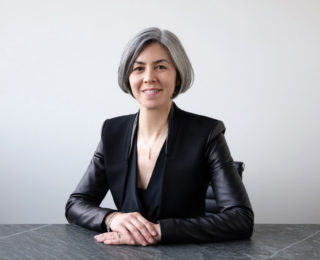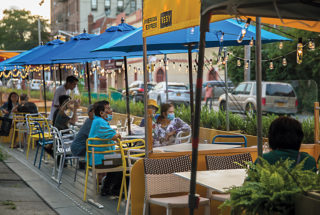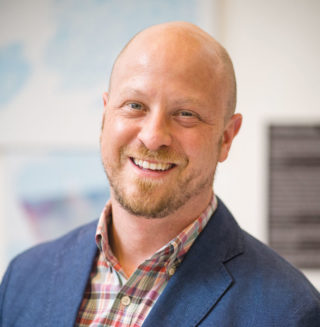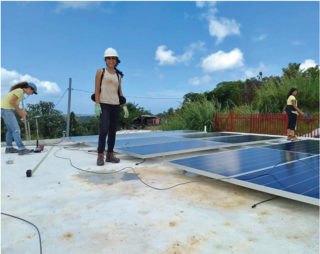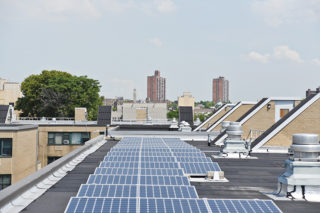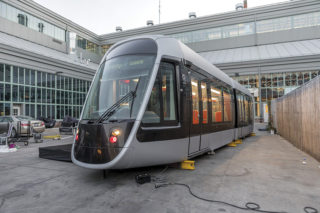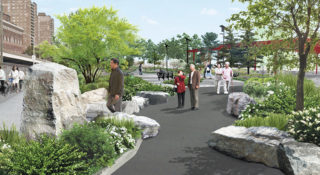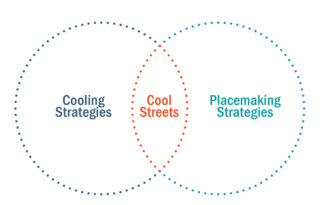What if a new infrastructure project could accommodate several of New York’s major public priorities at once—multimodal transportation, waterfront development, park accessibility, and social equity—while filling a need that has gone puzzlingly unaddressed? Garo Gumusyan Architects (GGA) proposes that the city raise the value and profile of Randall’s Island, the three-borough convergence point where Robert Moses once based his operations, by constructing a new bridge and soccer stadium.
At a stroke, adding these features to an underused site within view of East Harlem could increase that neighborhood’s access to the island’s ample recreational resources while laying the groundwork for potential mixed-use expansion of the island complex. We view Randall’s Island as a civic asset that has been hiding in plain sight for decades, and we propose bringing it within reach of far more New Yorkers than it currently serves.
This project extends the island’s history of stepwise physical integration with the surrounding boroughs. Randall’s Island and Wards Island, conjoined in the 1960s when Moses added landfill to the channel then known as Little Hell Gate, gained connections for vehicles in 1936 (the Triborough Bridge) and for pedestrians and bicycles in 1951 (the smaller Wards Island Bridge over the Harlem River, linking the island’s southwest point to East 103rd Street). The Randall’s Island Connector to the South Bronx Greenway (2016) strengthened cyclists’ and pedestrians’ ties to the Bronx.
Our proposed bridge provides the same benefit to Manhattan, ending the paradox that Randall’s Island is officially within the borough but difficult to reach from it. With lanes assignable to pedestrians, cyclists, and vehicles according to demand, the new bridge will foster transport-mode diversity. Its single-pylon cable-stayed design allows material efficiency and visual grace, giving this part of the city the same harmonious aesthetics that the new Kosciuszko Bridge has given its area of Brooklyn and Queens.
The mid-island stadium site, currently dominated by vehicle parking, offers a spectacular southwest-facing riverside view of Manhattan that we believe would be more appropriate for athletes and spectators than for cars. The stadium roof shades the field asymmetrically to optimize this view for spectators on three sides, with the skyline as a dramatic backdrop, particularly by night; raked seating on that side is deliberately low to allow this view. With auto parking limited to a remote lot a practice field’s width away, visitors arriving by car join those taking the bridge’s pedestrian route in a structured, orderly approach to the canopied northeastern entrance, just as fans approach Barcelona’s Camp Nou or Liverpool’s Anfield. The site’s landscaped riverfront side is also a convenient point for aquatic access by ferries and water taxis; as NYC Ferry service continues to expand, a Randall’s Island landing would be a logical extension of the Soundview and/or Astoria routes on the East River, increasing the prominence of water transport as a unifying element among the boroughs.
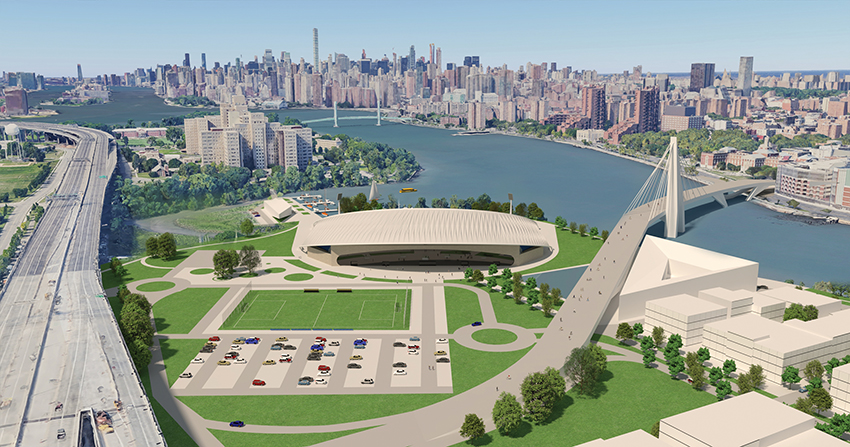
Some 40% of all athletic field space in Manhattan is on this publicly owned island, administered by the non-profit Randall’s Island Park Alliance. Yet its 60 fields, including golf and tennis centers and the Carl Icahn Stadium (2005) for track and field, are used disproportionately by private-school students (bused in from wealthier neighborhoods and schools) relative to the public school students, whose island access depends on public buses or narrow pedestrian routes. We believe that in a city striving for democratic distribution of public amenities, East Harlem residents, relatively starved for green space, deserve the improved access to Randall’s Island’s fields and parks that our proposed multimodal Harlem River Bridge would provide.
The stadium plan requires the sacrifice of the track-and-field facility. We view this tradeoff as a distinct net benefit, since Icahn Stadium differs little from running tracks found at numerous sites throughout the city, whereas the stadium gives this unique location an equally unique asset.
New York is a city of immigrants who bring their talents, drive, arts, cuisine, diverse intelligence, and diversions, including the world’s most popular game, el fútbol. The region has two Major League Soccer (MLS) teams, New York City Football Club (NYCFC) and the Red Bulls; a minor-league team with a lively history, the Cosmos (revived in 2010 and currently playing in the National Independent Soccer Association); and countless school and club teams. So many fans crowd the city’s sports bars during normal times—and no longer just during the World Cup—that one can specialize: in some cities, a visitor finds “the soccer bar,” but New York fans choose among a Bayern Munich bar, an Atlético Madrid bar, and so on, including no fewer than seven locals, by one count, for supporters of Arsenal.
Yet, within the boroughs, there is no dedicated soccer stadium large enough to accommodate MLS crowds. NYCFC currently plays in Yankee Stadium, an egregious facility mismatch. Red Bulls fans must trek to Harrison, NJ. Plans to secure a Bronx site for an NYCFC stadium (one of eight schemes considered to date) involve a complex set of approvals, relocations, roadway decommissionings, and associated uses; they have not approached finalization during the pandemic. Our simpler proposal displaces no businesses or roads, gives NYCFC (or other potential tenants) their own high-visibility stadium rather than a tight site overshadowed by Yankee Stadium, and uses land the city already owns. It also incorporates a bridge that overcomes the long-standing disconnection between Manhattan and its largest concentration of spaces for sport. Of course, Randall’s Island is more than a playground, having hosted music and arts festivals and other events for years, along with hospitals, training academies for the New York City Fire Department and Parks Enforcement Patrol, and other vital municipal structures. When a coronavirus vaccine or other measures eventually bring an end to the lockdown period, and large gatherings are possible again, a Randall’s Island that visitors can walk or ride to from Manhattan will have much less congestion than some past festivals have generated. It can be a pivotal, rather than peripheral, part of New York.
Building any new urban sports facility during the pandemic, which has forced every manifestation of people’s gregarious instincts into hibernation, is arguably counterintuitive. Yet the history of New York’s built environment implies that the coming years may be exactly the time to think against the grain and build—despite the recommendations of the cautious. The city’s distinctive New Deal-era architecture is an enduring reminder that economic hard times can be excellent times to invest in civic assets. The bridge/stadium project will require the kind of large-scale initiative associated with Robert Moses, while advancing the democratic, urbanist, and neighborly values more often linked with urbanist/activist Jane Jacobs. We suggest it in the spirit of the best of both of them.








